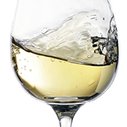


Cooking time: 1 hour
Instructions
Sea Bream with Amontillado
Clean, gut and rinse the fish, leaving the head on, and dry it thoroughly. Peel the onions and cut into rings. Place the sliced onions in an ovenproof tin or dish and put the fish on top, seasoning it with salt and pepper, inside and out. Dot half the butter over the top, and pour over a generous amount of amontillado. Add a cup of water, then cook in a pre-heated hot oven for at least 20 to 25 minutes. Remove the fish, place on a serving dish and allow to cool slightly, then remove the skin before it gets cold. Pass the onions and cooking juices through a fine sieve, pressing well. Use the remaining butter and the flour to make a roux, then gradually stir in the hot, strained fish liquor. Cook gently over a low heat for about 20 minutes, then add the cream and check the seasoning, adjusting salt, wine and pepper if necessary. The sauce should be thin in consistency, with rich fish and wine flavours. Optionally, you can add a small teaspoon of mustard at this point, taking care to mix it in well. Pour some of the sauce over the fish and the rest into a jug for serving at the table. This dish may be served hot or cold. Endive salad and steamed new potatoes go well with it.

Serving and consuming
Fino with food
It is an ideal aperitif wine and goes well with all types of tapa, especially olives, nuts and Iberian cured ham.
Also providing the perfect companion for shellfish and fish, especially those with a marked salty taste (anchovies) or even raw (sashimi).
Its low acetic acid content combines exceptionally well with dishes of marked acidity (vinaigrette salads, marinades, etc.) as well as with cold soups (gazpacho, ajo blanco, etc.).
-
Always serve chilled
Use an ice bucket with both ice and water to serve chilled between 6º & 8º C.
-
Perfect for Tapas
It adapts perfectly to a diverse range of salty and intense flavours.
-
Style of Glass
In traditional wide-rimmed catavinos, or in white wine glasses.

